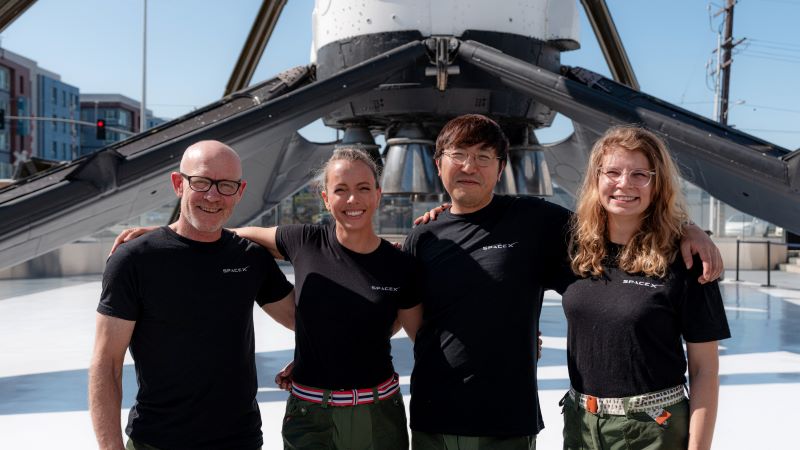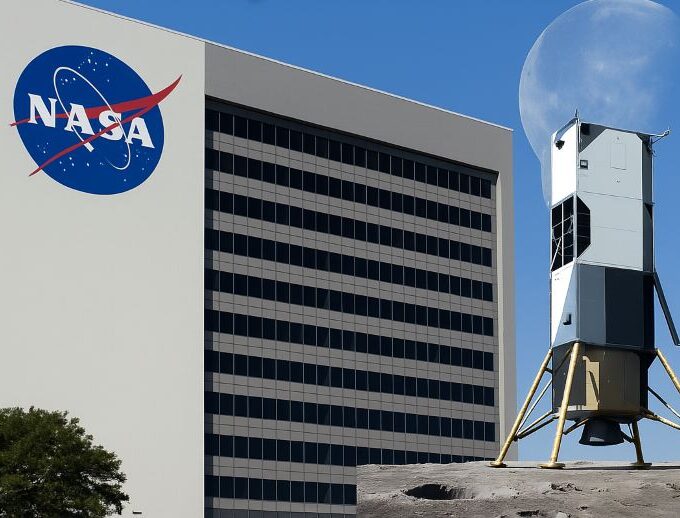According to the latest news, SpaceX successfully launched the Fram2 mission, the first human spaceflight in history to cross the Earth’s North and South Poles. The success of this mission not only sets a milestone in the development of private spaceflight but also provides a new perspective on polar research. The mission consisted of four private astronauts and was designed to study the Earth’s polar regions and conduct a series of scientific experiments.
Mission Overview
“The Fram2 mission takes its name from the famous Norwegian polar explorer Fram, symbolizing the spirit of exploration and discovery. The mission team includes Mission Commander Chun Wang, Norwegian Flight Commander Jannicke Mikkelsen, German pilot Rabea Rogge and Australian Medical Officer Eric Philips. The astronauts will travel on a three- to five-day mission aboard SpaceX’s Crew Dragon spacecraft, which will traverse the Earth’s poles and make approximately 55 orbits of the planet.
Scientific Objectives and Experiments
Throughout the mission, the astronauts conducted 22 scientific experiments designed to help scientists understand the effects of spaceflight on the human body as well as natural phenomena at the Earth’s poles. In particular, the mission team conducted the first experiment to X-ray the human skeleton from space, which provides important data for future long-duration space flights. In addition, the team captured images of the aurora borealis and tested compact exercise equipment designed for spaceflight, experimental data that will be critical for future long-duration space expeditions.
Astronaut Background
Chun Wang: a Chinese-born cryptocurrency entrepreneur and funder of the mission. Chun Wang has a deep interest in polar exploration and has participated in several polar expeditions and hopes to combine exploration and scientific research with this mission.
Jannicke Mikkelsen: An Extreme environmental photographer from Norway, who mainly photographs polar expeditions, is responsible for high-resolution imagery of the polar regions and visual studies of atmospheric phenomena on this assignment.
Rabea Rogge: German electrical engineer and robotics researcher responsible for conducting experiments related to automated systems and space technology, pushing for greater efficiency in robotic operations in space.
Eric Philips: Australian polar guide and explorer, medical officer on this mission with extensive experience in extreme polar environments, ensuring the health and safety of all astronauts.

Implications for future expeditions
The success of this mission not only marks a breakthrough in commercial spaceflight but also provides valuable experience for future long-duration space missions. The Fram2 mission has demonstrated the viability of non-professional astronauts in carrying out complex scientific missions and expeditions. This provides feasibility data for future long-duration exploration missions, especially for future missions to Mars, particularly in the areas of human physiological responses and space survival systems.
In addition, the Fram2 mission demonstrates the growing role of private enterprise in space, with private investment and commercial aerospace companies playing a growing role in space exploration. This not only promotes technological advancement but also provides new avenues for public participation in space exploration. In the future, as technology advances, more commercial missions will go into space, potentially leading to more innovative collaborations and discoveries.
Looking to the Future
This mission not only expands human understanding of the polar regions but also opens up more possibilities for private space companies and space exploration. As technology continues to advance and mission sizes continue to grow, SpaceX and other private space companies are expected to further reduce the cost of space travel and increase the frequency of space missions. In the future, the construction of space stations, the development of moon bases, and more distant planetary exploration missions could all become a reality.
This mission marks another major advance in commercial spaceflight and symbolizes the dawn of a more open and diverse era of space exploration. Collaboration between the private and public sectors, especially in the application of space technology and research, may lead to more positive results and promote global scientific and technological innovation.
Conclusion
SpaceX’s Fram2 mission has not only expanded the boundaries of human exploration but also accelerated the rise of private space companies in the space arena. The success of this mission demonstrates the potential of non-professional astronauts in space exploration and accumulates valuable experience for future long-duration space missions. With the further development of commercial spaceflight, future space exploration will become more diversified and open, promoting scientific and technological progress for the benefit of all mankind.












